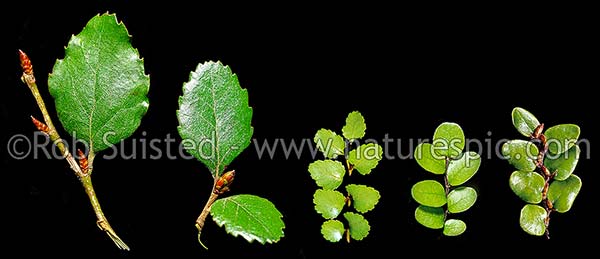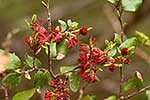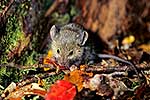Our New Zealand Nothofagus beech trees have vanished! Just before Xmas been, a major taxonomic revision of Southern Beech Trees quietly occured that sees Nothofagus vanish from our shores, to be replaced by Fuscospora and Lophozonia. Nothofagus is no more in New Zealand.
Red Beech was Nothofagus fusca, now: Fuscospora fusca, Hard Beech was Nothofagus truncata, now: Fuscospora truncata, Silver Beech was Nothofagus menzeseii, now: Lophozonia menziesii, Black Beech was Nothofagus solandri var. solandri, now: Fuscospora solandri, Mountain Beech was Nothofagus solandri var. cliffortioides, now: Fuscospora cliffortioides. It’s going to take a bit to get the new names rolling from the tongue.
While we’re on the subject of our beautiful Southern Beeches, I took a photo that shows just how colourful these trees get. This was taken near the top of the 4×4 Porika Road track in Nelson Lakes National Park and shows both new growth leaf colour and beech mast flowering:
Of interest is that this year is a ‘Mast’ year for our beech forest.
Masting is a breeding strategy that sees a species breed only once every few years, and then all individuals breed in unison, when conditions are favourable. Our beech forests are into it now.
The forest will soon have an abundance of food for seed eaters, but this has a major unfortunate side effect… Introduced mice will breed very quickly to take advantage of the extra food supply, followed by a boom of non-native introduced predators such as stoats to take advantage of the extra mice to eat in the forest.
There will be the inevitable collapse of resources in the system, when the mice run out of beech seed, and the stoats have run out of mice, they’ll be forced to turn their attention to hunting our native birds and fauna to stave off starvation. This beech mast year is an interesting spectacle but one that will introduce a huge wave of unsustainable carrying capacity distuption with serious downstream negative effects for our native wildlife and ecosystems.
Here’s a photo taken during a previous Beech Mast year when there were young wild mice everywhere in the forest – I’d literally see one every 10 metres scarrying around on the forest floor.


















Great article and the comparison photo of the various beeches is brilliant. Well done.
Thanks Hayden. Yes, it’s great to get them all together finally. Regards, Rob
Thanks for the article Rob. Are there any strategies in place to deal with the mouse problem?
I’m very interested in the southern beech. I live in the Mid North Coast of NSW in Australia. I visited a Northofagus Mooreii remnant forest the other day. Do you know much about these?
I’d love to collect and try to germinate some seeds, but I don’t know when they’re seeding.
Cheers,
Simon.